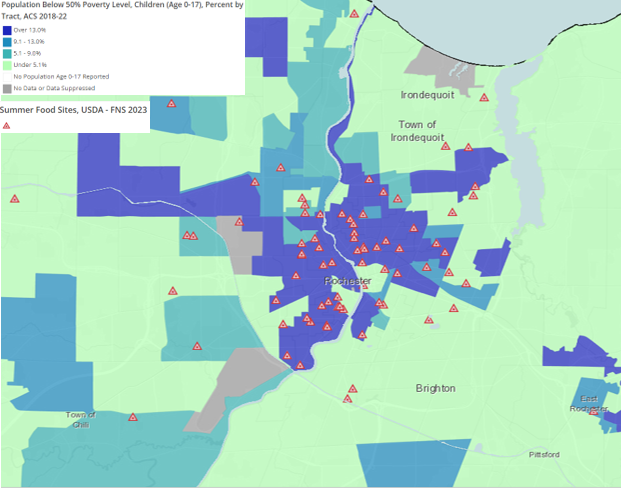As we embrace the warmth and fun of summer, it’s easy to overlook a critical issue that affects millions of children across the country: food insecurity. During the school year, many children rely on up to two nutritious school meals a day from their school, which essentially disappear when summer break arrives. For families already struggling with poverty, this can cause a major defect in the child’s nutrition. Without consistent access to nutritious meals, children may experience not only health complications, but also academic challenges, and emotional and behavioral issues.
The Summer Meals Partnership of Rochester (SMPR) and the Summer Meals ROC Program are addressing this issue in downtown Rochester. This program provides free meals to any city residents age 18 or younger at over 35 sites, including local schools, parks, and libraries, ensuring that children have access to nutritious meals even when school is out. Aaron Lattanzio, director of Nonprofit Capacity Solutions at Causewave and Summer Meals coordinator for the Summer Meals Partnership (SMPR), notes that the program will serve meals to 3,500-5,000 kids per day, on average, and 225,000-300,000 meals over the course of the summer. The program emphasizes community-focused strategies for improving the entire experience for youth. Summer Meals ROC also connects families with other food resources in their communities.

During the summer months, SMPR’s main goals are getting the word out to the community, and serving the meals. Community members can help by spreading the word to qualifying families and visiting the Summer Meals ROC website to learn more. As can be seen in the accompanying map, childhood poverty is a major issue in the downtown Rochester area. A couple neighborhoods are experiencing rates of 13.0% and greater of children who are living below 50% poverty level, and most are experiencing a rate of at least 5.1%. Visit the RocHealthData map room to interact with this data and learn more about the issue and distribution of childhood poverty in our community.

Leave a Reply
You must be logged in to post a comment.